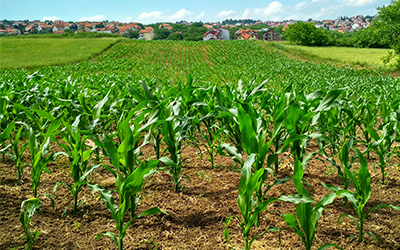
Statistically bias-corrected and downscaled climate models underestimate the adverse effects of extreme heat on U.S. maize yields
D. C. Lafferty, R. L. Sriver, I. Haqiqi, T. W. Hertel, K. Keller, and R. E. Nicholas
Communications Earth & Environment (20 September 2021)
Efforts to understand and quantify how a changing climate can impact agriculture often rely on bias-corrected and downscaled climate information, making it important to quantify potential biases of this approach. Here, we use a multi-model ensemble of statistically bias-corrected and downscaled climate models, as well as the corresponding parent models from the Coupled Model Intercomparison Project Phase 5 (CMIP5), to drive a statistical panel model of U.S. maize yields that incorporates season-wide measures of temperature and precipitation. We analyze uncertainty in annual yield hindcasts, finding that the CMIP5 models considerably overestimate historical yield variability while the bias-corrected and downscaled versions underestimate the largest weather-induced yield declines. We also find large differences in projected yields and other decision-relevant metrics throughout this century, leaving stakeholders with modeling choices that require navigating trade-offs in resolution, historical accuracy, and projection confidence. Historical annual maize yields in the U.S. are overestimated by CMIP5 models and underestimated by bias-corrected and downscaled models due to differences in temperature and precipitation hindcasts, according to a multi-model ensemble comparison.
additional materials: press release | MSD blog post |
summary slide | DOE highlight | open access manuscript